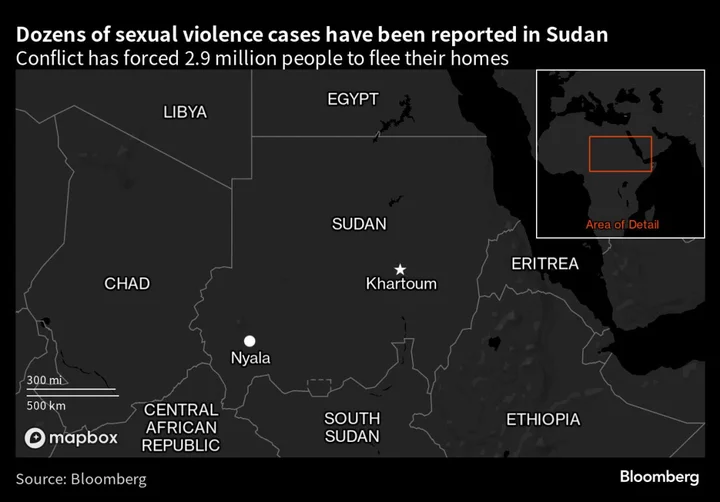Facing one of the most sophisticated surveillance states on the planet, Hamas simply went dark.
The militant group’s attack on Saturday caught Israel’s national security apparatus completely off guard — a shocking fact given the scope of the incursion, which included attacks by sea, air and land, and pushed deep into Israeli territory.
In theory, it shouldn’t have been possible. Israel’s intelligence services have a reputation as some of the world’s most sophisticated. And the Gaza Strip, a slice of land next to Egypt, is one of the most surveilled places on the planet. Phone lines are tapped. Satellites watch overhead. Informants keep tabs on the 2 million residents of an area just over twice the size of Washington, DC.
Israel and the US will need years to sift through all the failings that allowed Hamas to move with such surprise and to such deadly effect, killing hundreds of Israelis and capturing others. But already, a picture has begun to emerge of how the group’s fighters did it, according to current and former intelligence officials in the US, Israel and elsewhere.
While many questions remain unanswered, what’s clear is that Hamas went low-tech, avoiding Israel’s ability to tap its communications, and even, perhaps, exploiting the Israeli Defense Forces’ confidence that its missile attacks could be repelled or prevented
“My suspicion is that Hamas was able to keep such a vast operation — which included many, many trainers, lots of operational training, and bringing in a vast amount of munitions — close-hold because they went very old school,” said Beth Sanner, former deputy director of national intelligence.
“I suspect they never talked about it electronically,” Sanner said. “They broke it up into cells and did individual meetings. And each group was assigned to do different things. Very few people understood how each of the components came together as the whole plan.”
Read more: Israel Attacks Risk New Front With Iran in Proxy Shadow War
As dawn broke on Saturday, some 1,000 Hamas fighters burst through the technologically advanced fence designed to protect against threats from Gaza, fanning out across towns and villages. Children were shot in front of their parents. Hostages were dragged from their homes. Overhead, thousands of rockets rained down as other fighters entered the country on paragliders.
A person familiar with Israeli intelligence operations said the success of the attack likely means that the country’s military intelligence, which has primary responsibility for monitoring developments in Gaza, lacked high-quality human sources inside Hamas’ leadership.
It’s also possible that the group’s planning relied on encrypted technology, according to Andrew Borene, an executive director with Flashpoint and a former group chief at the US National Counterterrorism Center. “I have a feeling there is also a component of clandestine communications using devices,” he said.
Alon Arvatz, a former member of Israel’s Unit 8200, which is responsible for the military’s signals intelligence, said it’s clear that Hamas has been able to sidestep Israel’s ability to intercept phone and email communication. That includes some of the “perception techniques” Israel has used in the past, which he said might be based on computers or phones or anything that can be intercepted.
“They obviously learned how the intelligence is being collected, and they learn how to avoid it,” Arvatz said.
Underground — Literally
If taking its communications dark helped Hamas circumvent eavesdropping, then going underground — literally — may have helped thwart Israel’s surveillance satellites.
Hamas has excelled for years at hiding its weapons stockpiles in tunnels or underground, according to a person familiar with US intelligence on the group. As a result, Israel has hit its above-ground depots time and again from the air to no avail, the person said.
The tunnels appeared to have aided the execution of the attack. Instead of seeking to dig underneath the sensor-equipped underground wall that Israel completed in 2021, “they chose the alternative of digging up to the obstacle and then popping out by surprise,” said Israeli military analyst Eado Hecht. “They sent a mass attack that overwhelmed the system beyond its capacity to react quickly enough.”
Hamas’ planning was also probably helped by the growing sophistication of its own intelligence apparatus. Its capabilities have expanded dramatically since it seized control of Gaza in 2007, according to a May 2023 study in the journal “Intelligence and National Security.”
Tactical Communications
The group’s Military Intelligence Department has devoted significant resources to observing the border with Israel, running agents in the country and listening to the Israeli Defense Forces’ tactical communications. As a result, Hamas has amassed knowledge on Israeli weaponry, training and troop deployments, according to the study.
Hamas “had very good intelligence that the Israeli border was lightly manned, that it could be overrun, that they would able to get close enough to detonate explosives and get through the fences, wires and checkpoints — that’s the key,” said Kenneth Katzman, the Congressional Research Service’s former top Middle East expert. All of this information would have allowed Hamas to “map out this type of assault,” he said.
The ability of Hamas to plan the attack and hide its intentions must also be set against Israel’s own shortcomings.
Israel’s government faces charges that its national security establishment was distracted by domestic infighting. Many Israelis have protested for months against Prime Minister Benjamin Netanyahu’s efforts to strip power from the nation’s judiciary.
The Times of Israel reported Monday that Egyptian intelligence had repeatedly warned Egypt that Hamas was planning “something big,” but that Israeli officials chose to focus on the West Bank instead of Gaza. Bloomberg News hasn’t independently verified that reporting.
There’s also the possibility that Israel grew too confident, in part because its technological sophistication lulled it into a false sense of security. Two years ago, the Israeli Air Force posted an article on its website entitled, “Exclusive: The IDF’s Ability to Strike Rockets Before They’re Launched.”
The article outlined a scenario that failed to repeat itself on Saturday as thousands of Hamas rockets overwhelmed Israel’s air defenses. Throughout the 2014 Gaza war against Hamas, the IDF struck “hundreds of terrorists who were caught firing rockets at Israel. Many of them were struck right before launching, others were targeted after the act,” according to the article.
Israel also appears to have misunderstood the intent, motivations and capabilities of Hamas in failing to anticipate the possibility off a cross-border raid, according to Sanner, the former deputy director of national intelligence.
“They failed in the imagination of how all of these events that were happening came together as a much greater whole,” Sanner said.
--With assistance from Jamie Tarabay, Jenny Leonard and Tony Capaccio.
Author: Peter Martin, Katrina Manson and Henry Meyer









